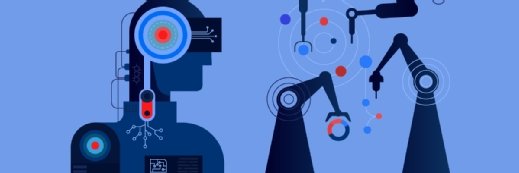
Getty Images
Researchers Leverage AI to Detect Causes of Alzheimer’s Disease
New research from Mount Sinai Health System shows that novel artificial intelligence methods can examine brain tissue to identify the causes of Alzheimer’s disease.
Published in Acta Neuropathologica Communications, new research from the Mount Sinai Health System found that an artificial intelligence (AI) method can detect microscopic abnormalities in brain tissues that may be early indicators of Alzheimer’s Disease.
According to the Centers for Disease Control and Prevention, about 5.8 million Americans had Alzheimer’s in 2020. Data indicates that this figure will jump to 14 million by 2060. Technological innovations are being applied to clinical care to identify the disease earlier and begin treatment to mitigate the negative impacts of growing disease prevalence.
In their study, researchers from Mount Sinai Health System used AI to analyze the structure and features of human brain tissues, aiming to gather information regarding the potential causes of Alzheimer’s.
“AI represents an entirely new paradigm for studying dementia and will have a transformative effect on research into complex brain diseases, especially Alzheimer’s disease,” said co-corresponding author John Crary, MD, PhD, professor of pathology, molecular and cell-based medicine, neuroscience, and artificial intelligence and human health, at the Icahn School of Medicine at Mount Sinai, in a press release. “The deep learning approach was applied to the prediction of cognitive impairment, a challenging problem for which no current human-performed histopathologic diagnostic tool exists.”
The analysis involved slide images of human brain autopsy tissues from over 700 elderly donors. Researchers used a deep-learning algorithm to evaluate the underlying architecture and cellular features of two brain regions: the medial temporal lobe and the frontal cortex.
The deep-learning approach identified low Luxol fast blue staining levels, a measurement used to determine levels of myelin, the protective layer around brain nerves. Researchers found that a decrease in myelin staining was associated with signs of cognitive impairment.
In total, they trained two sets of models that identified cognitive impairment levels accurately, according to the press release.
Researchers concluded that a drop in staining intensity detected by AI could serve as a valuable unit of measurement for brain impairment and potentially be applied to other related diseases.
AI use in diagnosing and treating various conditions is growing, bolstered by clinical evidence.
In September, UPMC Hillman Cancer Center researchers partnered with Realyze Intelligence to improve the treatment of early-stage breast cancer through AI and natural language understanding.
A recent study also described an AI-based model that provided labor risk predictions for childbirth. The model analyzes data from the start of labor, baseline characteristics, clinical assessments, and cumulative labor progress from admission. After testing the algorithm on data from thousands of deliveries, researchers determined that the model was accurate and provided secondary benefits, such as lowered costs.




